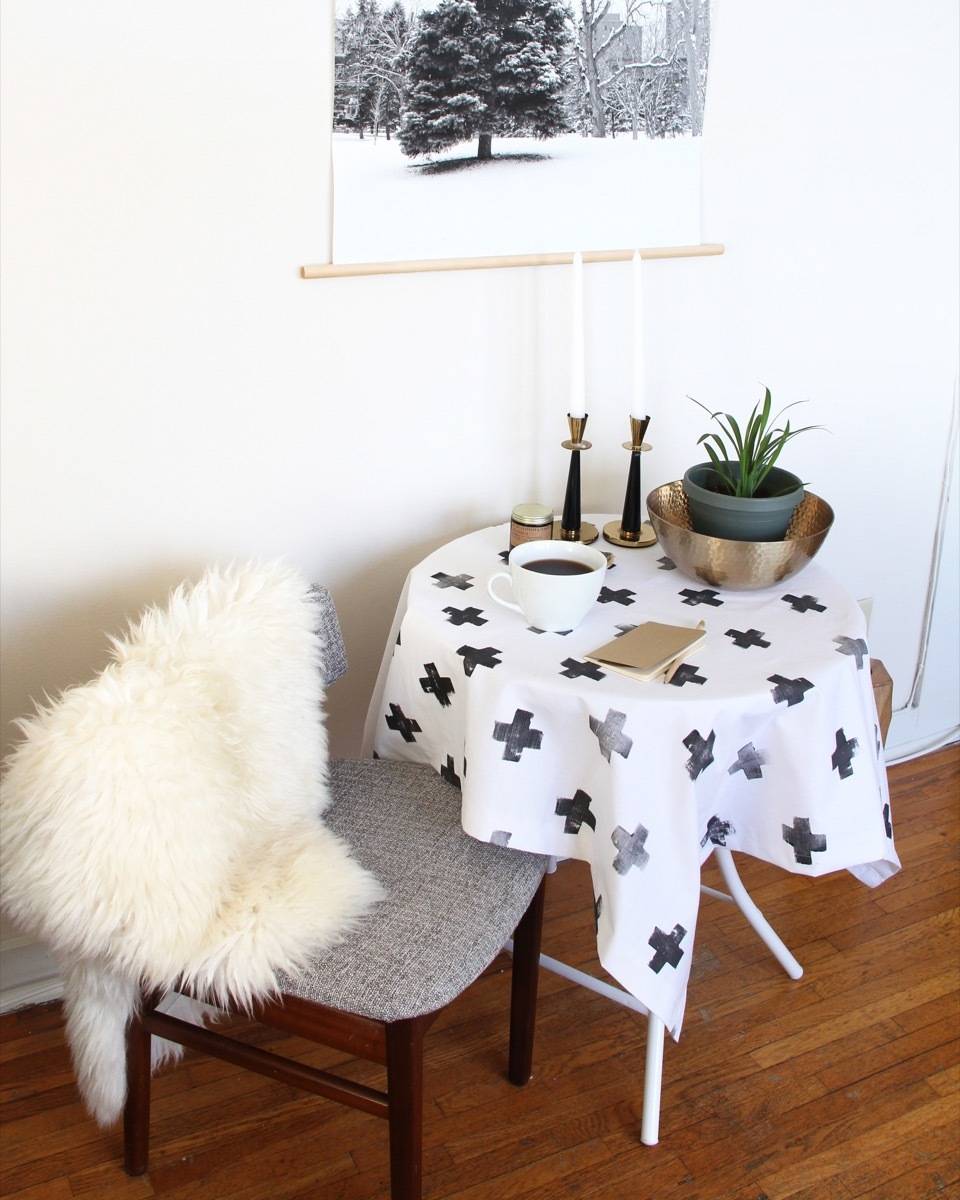
I can’t get enough of Scandinavian design, and I’m on the hunt for ways to bring this style into my home. The decor in my house hasn’t had a theme until very recently (unless you consider furniture inherited from past roommates a theme). Now that I’m almost 30 (panicked bells ringing as I type that), the items in my home are brought in with more intention. I love all things monochromatic, so the Scandinavian look fits my mostly-gray furniture perfectly. This dining table needed a new tablecloth, and the Scandinavian-inspried Swiss cross pattern seemed the perfect fit.
This project was done using a potato stamp, a method that might bring up memories of elementary school or craft time at sleep-away camp. Potato stamping turned out to be the perfect way to decorate this Scandinavian tablecloth. The potato creates a unique and organic looking pattern, which fits in with the balance of texture and minimal hues that are found in Scandinavian design.
Watch how this Scandinavian tablecloth was made, and follow the tutorial below for the full rundown.
Materials
- Plain cotton tablecloth (washed and ironed)
- Large potato
- Scissors, paper, and pencil
- Craft knife
- Acrylic paint
- Foam brush
- Iron and ironing board
- Drop cloth or cardboard (to protect the surface you’ll be working on)
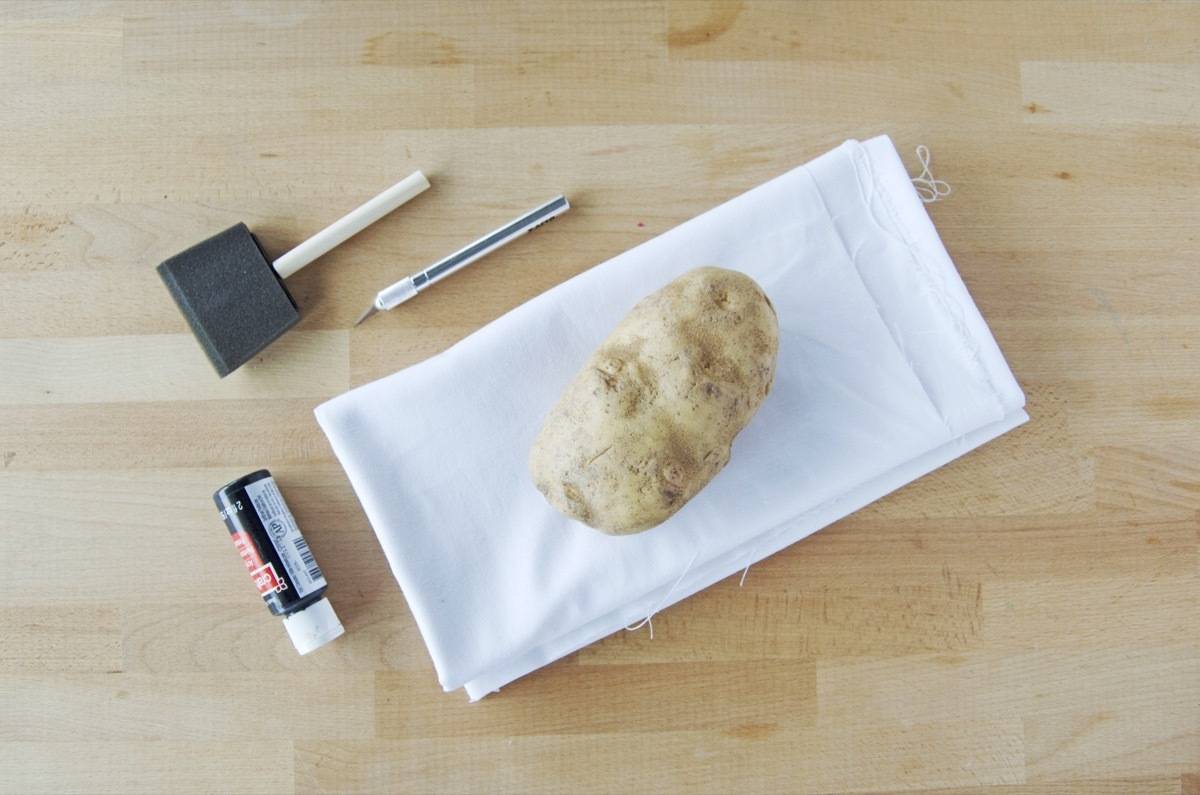
Step
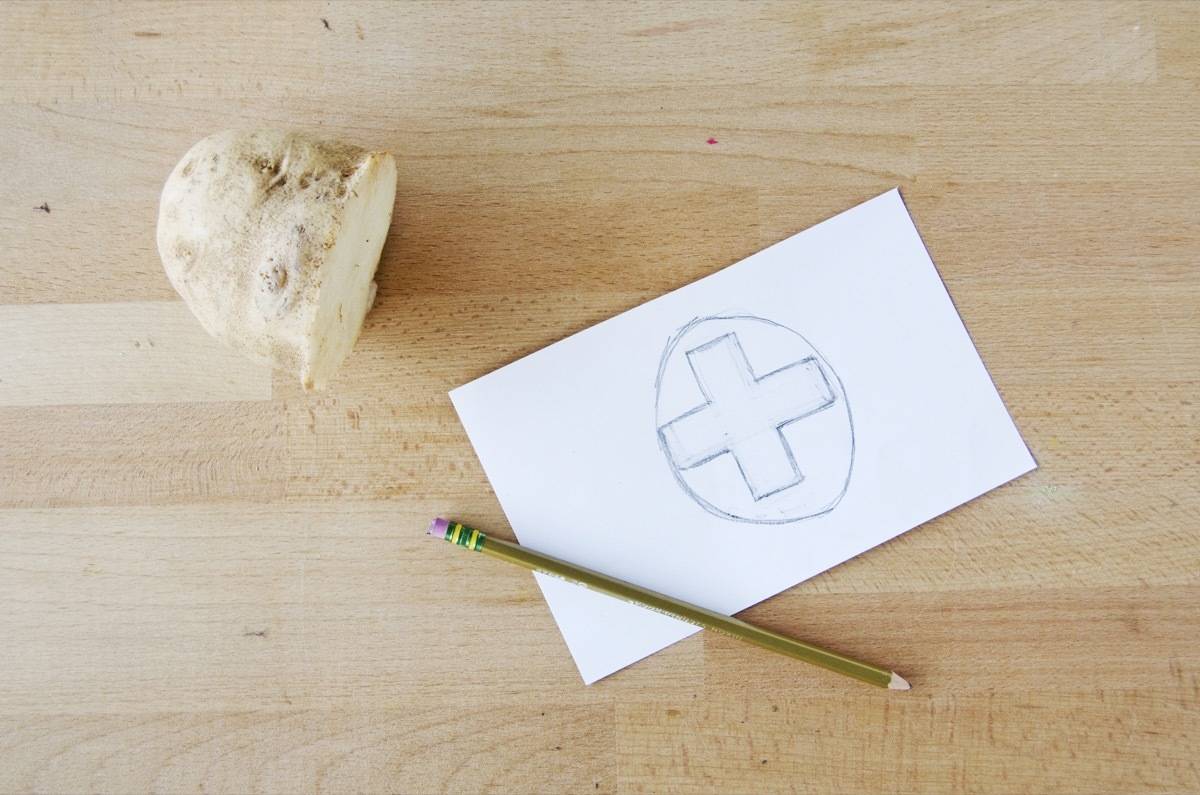
Cut the potato in half. When cutting, try to cut the edge as smooth and evenly as possible. Lay the open half of the potato onto a piece of paper, and trace around the diameter. This will give you an idea of how large or small your stamp can be. Using the size of the potato half as a guide, draw a stamp design. For this Scandinavian-inspired tablecloth, I am using a simple Swiss cross shape.
Step
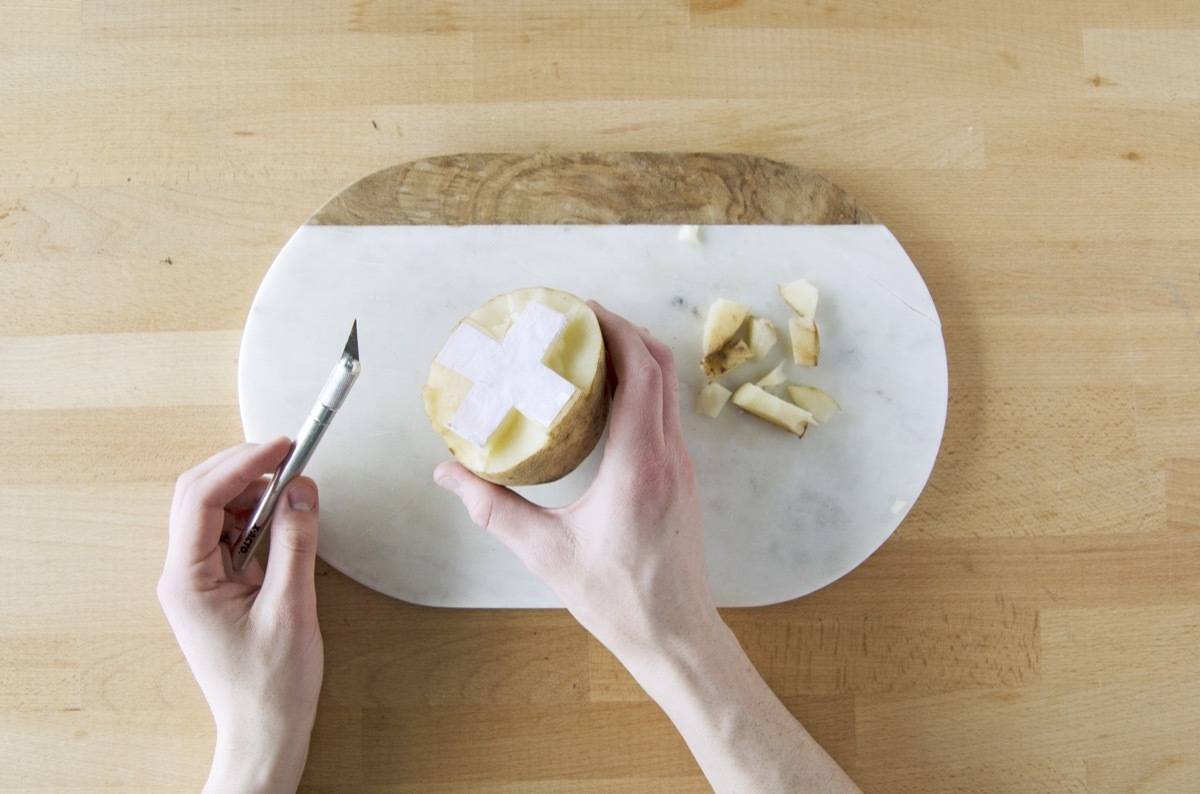
With scissors, cut out the design and place it on the open face of the potato. My paper stuck to the potato right away, but if yours does not, you can trace around the paper design. Once the design is in place, use a craft knife to cut away at the potato around the shape of the design. You’ll want to cut away enough so the face of the stamp no longer meets with any portion of the rest of the potato.
Step
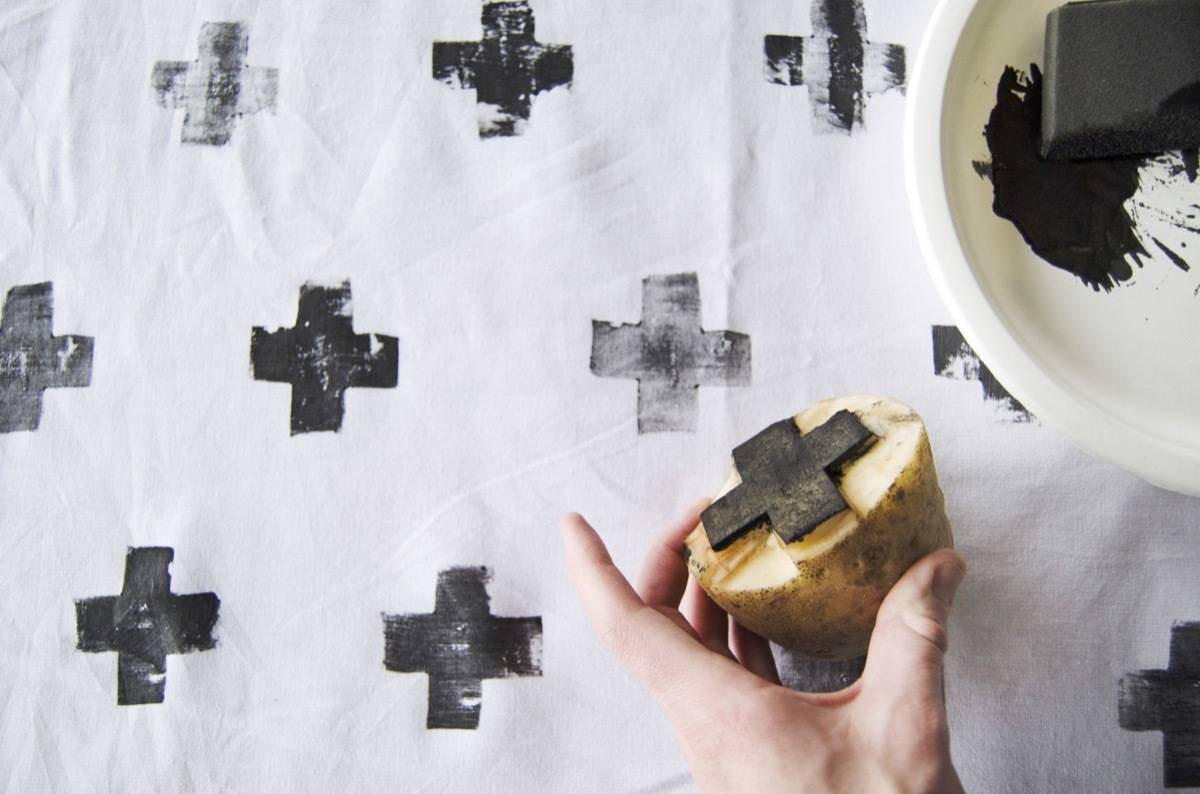
Lay the tablecloth on surface that can get messy. With a foam brush, apply a layer of acrylic paint to the potato stamp, then press the potato onto the fabric. I loved the faded look that showed up after stamping two or three times per application of paint, but if you want a continuously strong opacity, apply paint each time you stamp.
Step
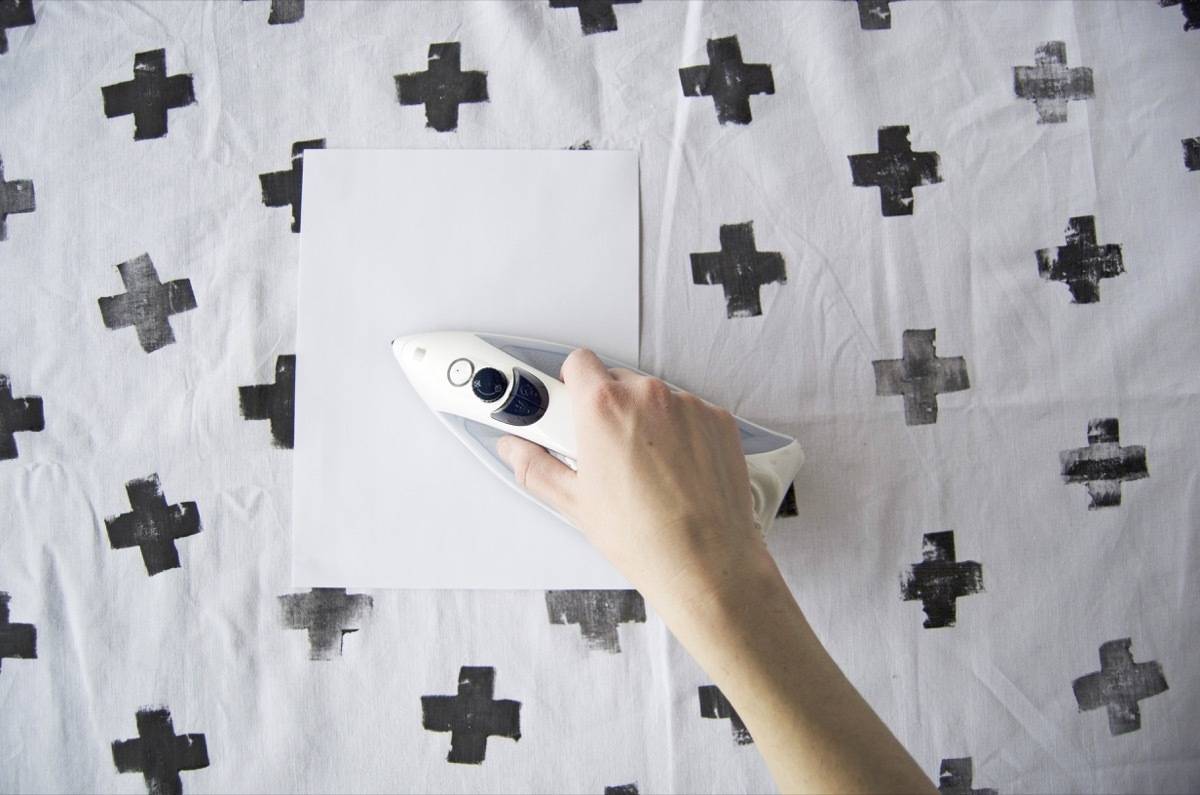
Once the designs on your Scandinavian tablecloth have dried, place a piece of paper in-between a dry iron and the tablecloth. Apply 5-10 seconds of medium-high heat to each stamp to heat-set the work you’ve done. If you want to heat set the designs further, run the tablecloth in a dryer for 5-10 minutes
If you’re wondering why my dining table is so small, it’s because my apartment is small! This table is the perfect size for my home, and fits in a small corner of the living room. It’s not a super classy table, but I think this Scandinavian tablecloth dresses it up a bit.
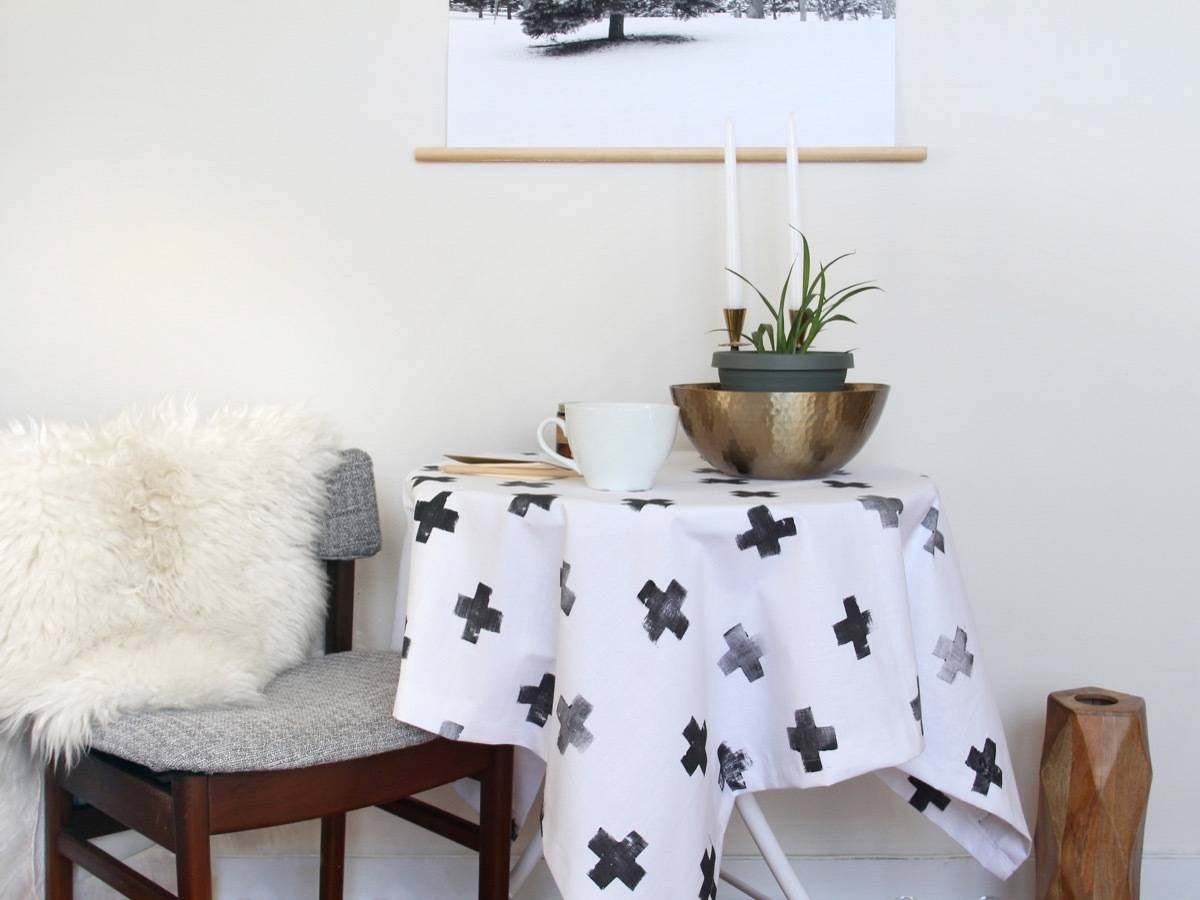
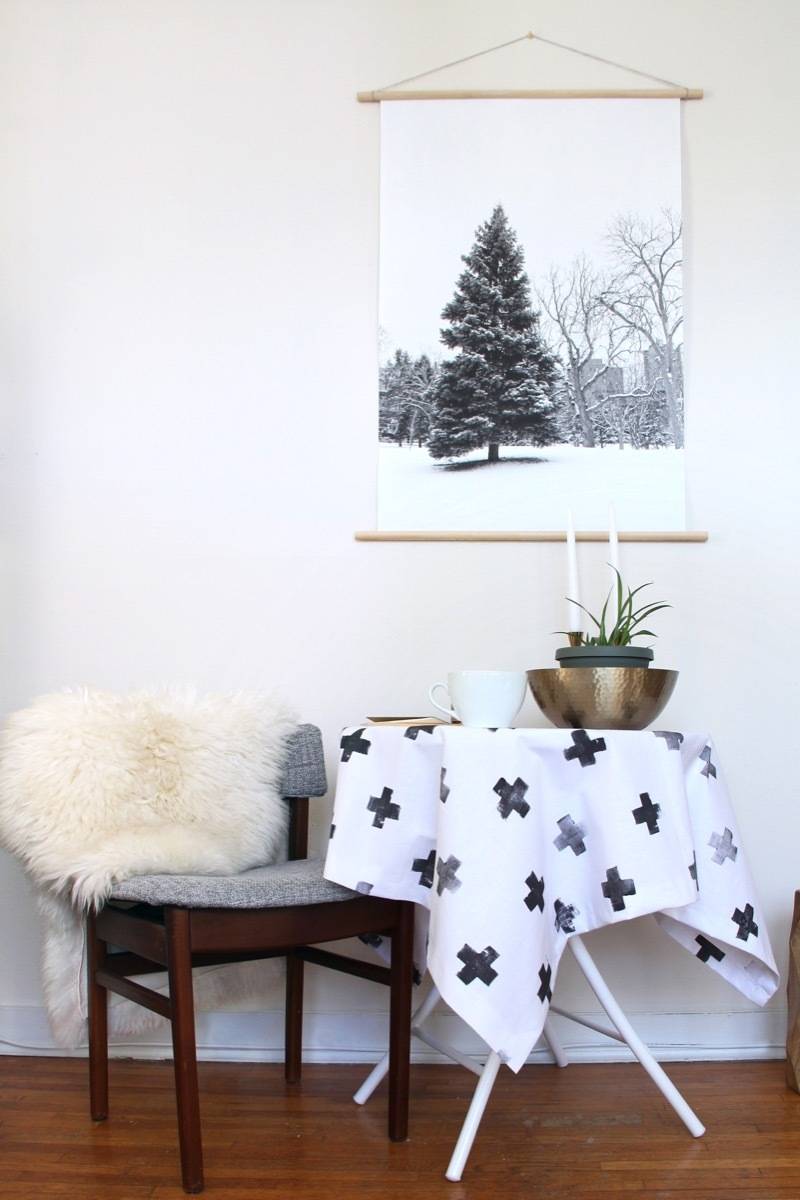
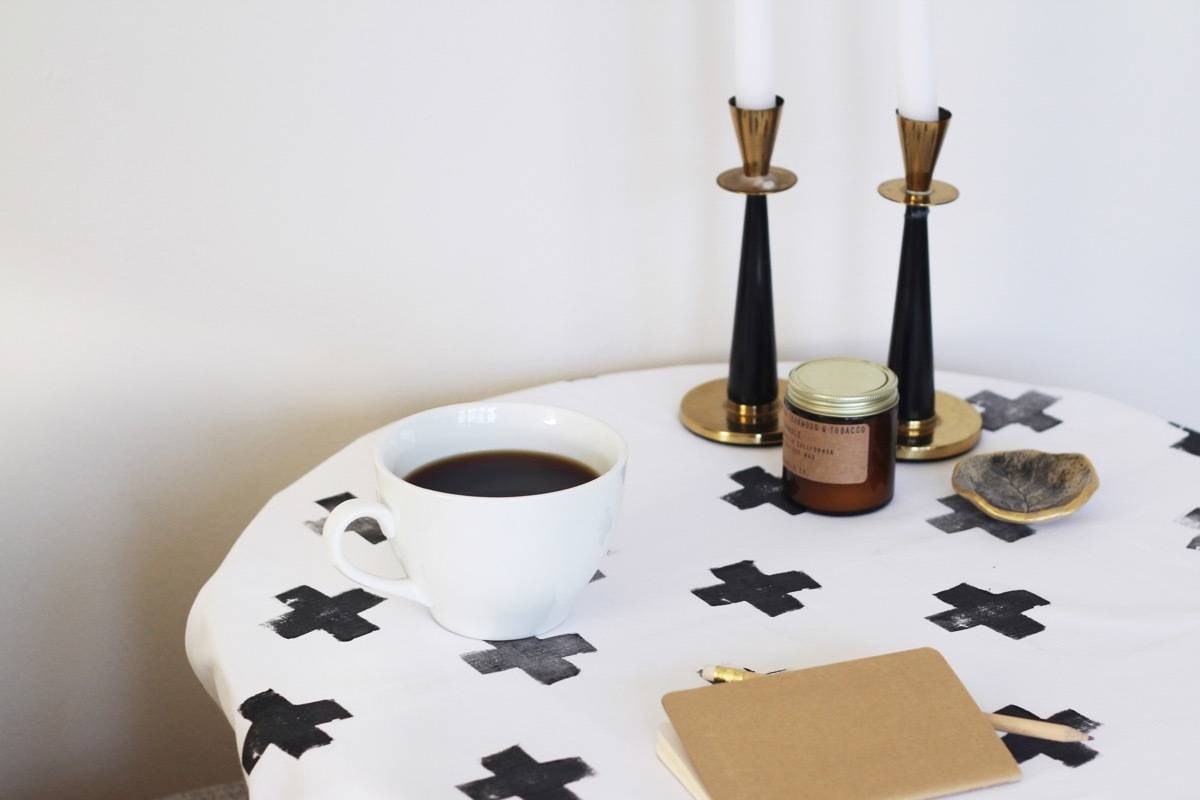
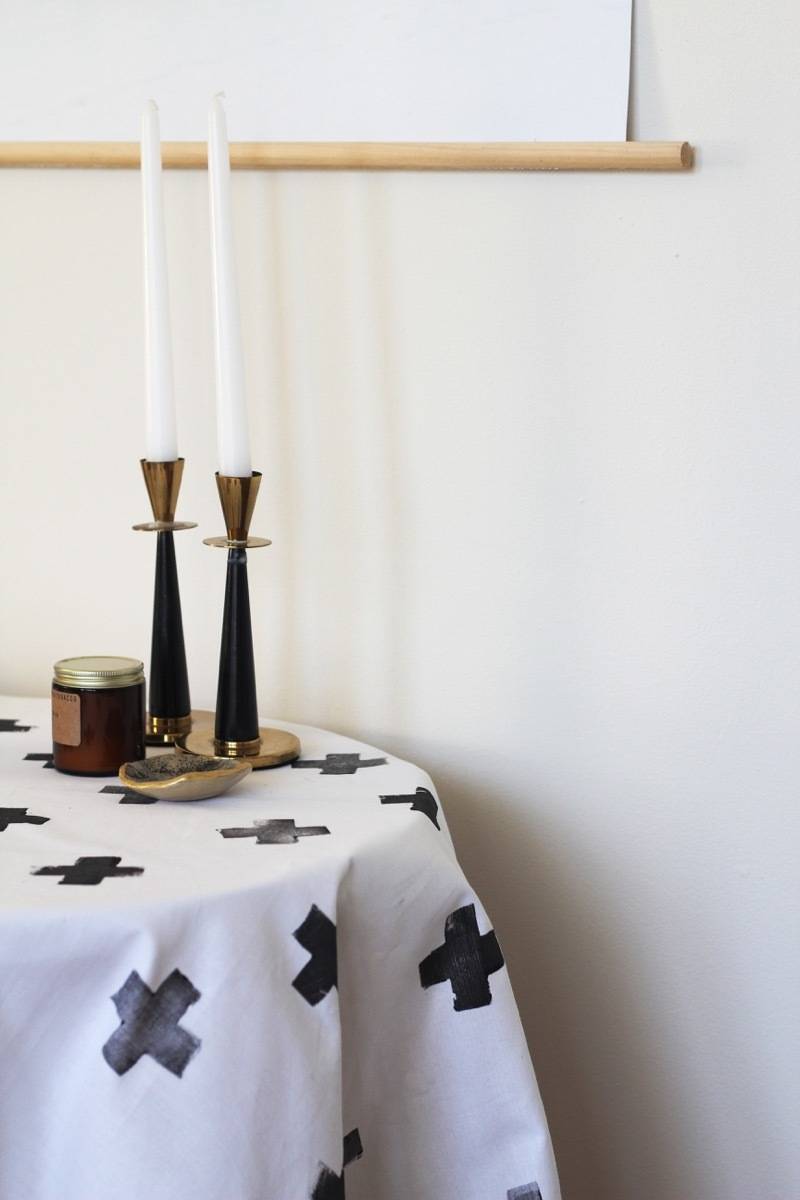
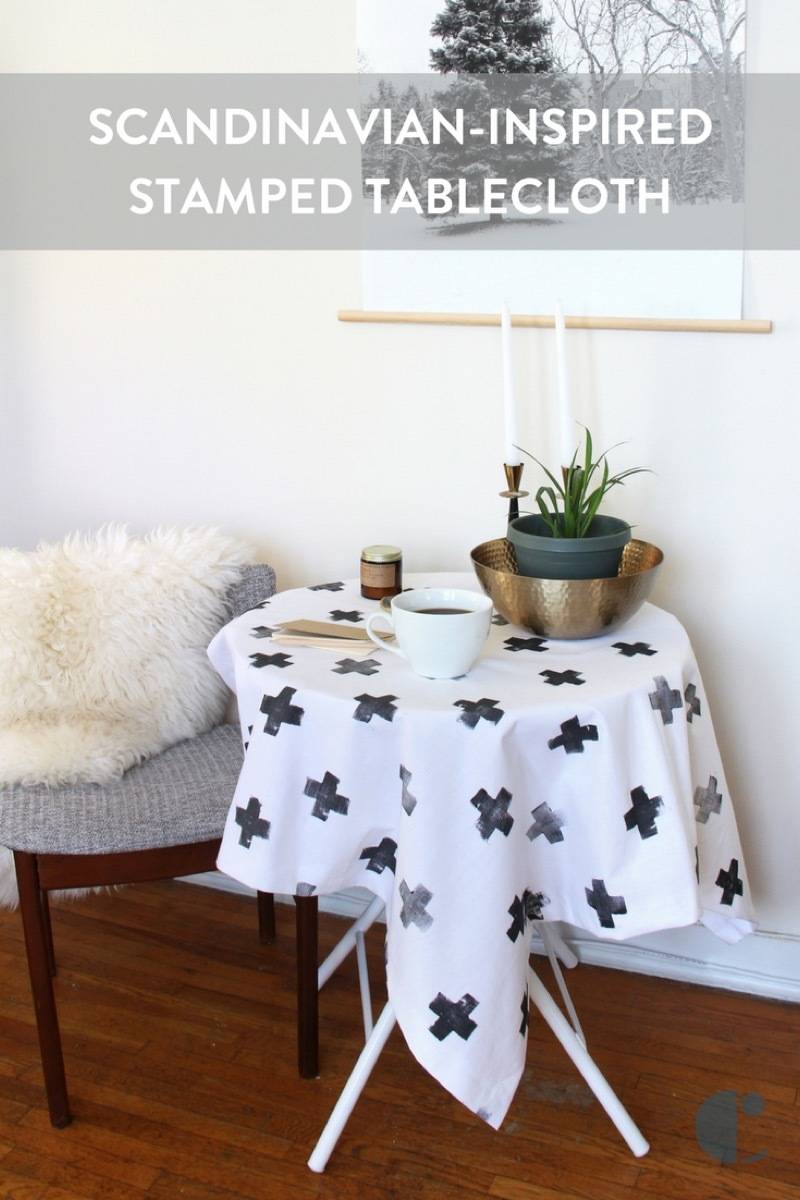
Making and using potato stamps was an oddly satisfying experience. Maybe it’s because potato stamping is an activity most of us experienced at some point in our childhood. Maybe it’s due to the tangible nature of carving away at something organic. Either way, it was super relaxing and I’m already looking for more excuses to carve more starchy stamps.
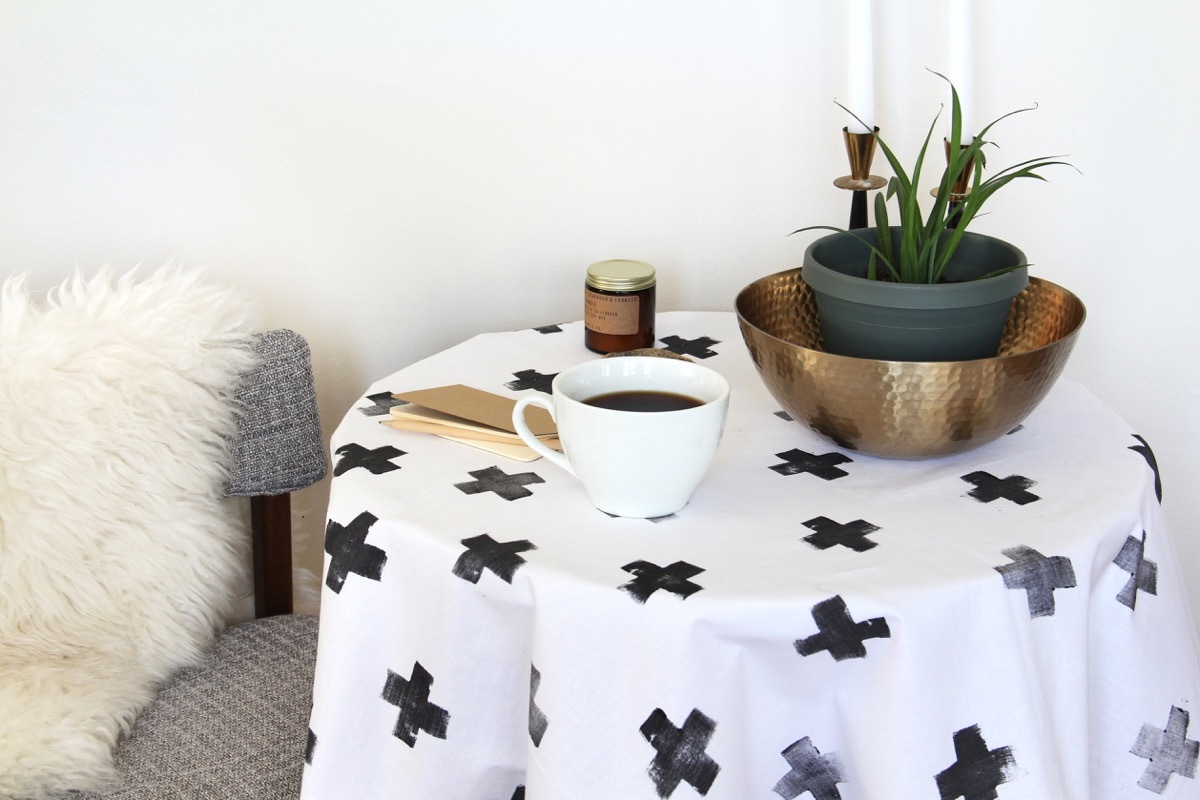
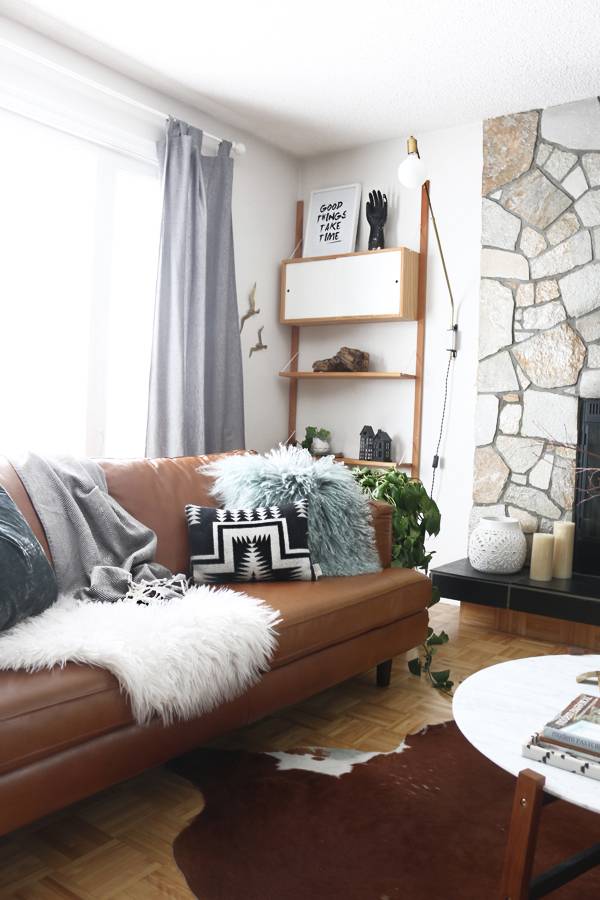
Love the tree print! Where’s that from?
@bruno Glad you like it! It’s actually a picture my fiancé took at a park here in Minnesota.
Super way to personalize a small space!